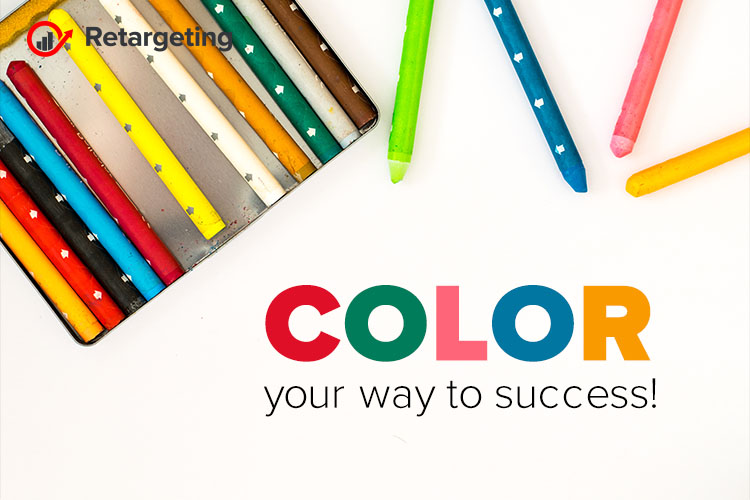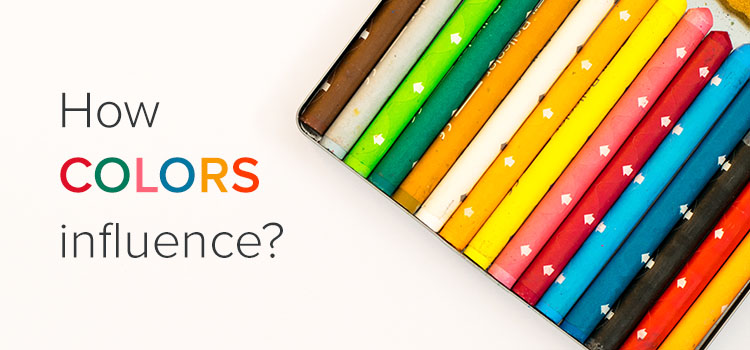Do you feel tranquility calm when surrounded by green fields and blue skies? Or perhaps slightly alarmed when staring at a red stop sign? Color has been known to have a powerful psychological impact on people’s behavior and decisions.
Color can often be the sole reason someone purchases a product, where 93% of buyers focus on visual appearance and almost 85% claim color to be their primary reason for purchase! Especially because consumers make a subconscious decision about a product, person or service in 90 seconds or less, according to studies.
Aesthetics influences the buying decision more than any other factor. Therefore, the colors you use to advertise your business can bring people in or turn them away.
How best to use colors?
Best practices in color psychology suggest using color tones, schemes, and styles that resonate well with your target audience, and give a sense of quality and credibility. Factors to consider when choosing your colors:
Age of Audience – Choose colors that will appeal to the demographics of your market. For example, yellow is most often associated with youth and vitality, while tones of blue usually attract an older, more conservative audience.
Type of product/service – Your color scheme should be appropriate for the service or product you sell. If your business is organic or environmentally friendly, use greens and browns. If you’re in the medical industry, use blues. Silvers and blacks tend to attract a more elegant, upscale, established audience.
When choosing your colors, start with the basics. Your color schemes can cause a person to want to learn more about you or move to your competition. That’s because colors, like words, can actually make people feel emotions.
You want your marketing to convey “feel good” emotions, stand out, and make a positive first impression.
How colors influence?
Red – Creates a sense of urgency, which is good for clearance sales. Encourages appetite, thus is frequently used by fast-food chains. Physically stimulates the body, raising blood pressure and heart rate, associated with movement and passion. It is also often associated with excitement and danger and is considered the most powerful of all colors.
Pink – Is considered by many to be a gender-specific color. Pink represents youth, innocence, sweetness, and softness. Light pink can also convey weakness, so use judiciously.
Blue – The preferred color of men. It’s associated with peace, water, tranquility, and reliability. Blue provides a sense of security, curbs appetite, and stimulates productivity. The most common color used by conservative brands looking to promote trust in their products.
Green – Associated with health, tranquility, power, and nature. Used in stores to relax customers and for promoting environmental issues. Green stimulates harmony in your brain and encourages a balance leading to decisiveness.
Purple – Commonly associated with royalty, wisdom, and respect. Stimulates problem-solving as well as creativity. Frequently used to promote beauty and anti-aging products. Be cautious, however, as is actually the color of mourning in some Asian countries.
Orange & Yellow – Cheerful colors that promote optimism. Yellow can make babies cry, while orange can trigger a sense of caution. Used to create a sense of anxiety that can draw in impulsive buyers and window shoppers. Thus you’ll sometimes see orange buttons on websites with a call to action like Purchase today and get 15% off.
Brown – Is considered a strong and solid color. Represents the earth and wood, both of which are considered masculine. Brown is considered neutral and can be paired with almost any other color. Be cautious though, because when used alone, it can represent boredom. Dark brown is often tied to opulence.
Black – Associated with authority, power, stability, and strength. Often a symbol of intelligence, but can become overwhelming if used too frequently. Can be incredibly powerful when used properly and can help to elevate another color to an even bigger impact.
Grey – Symbolizes feelings of practicality, old age, and solidarity. But too much can lead to feelings of nothingness and depression. When used in conjunction with other colors, it acts as a booster, enhancing whatever it is placed next to.
White – Associated with feelings of purity, cleanliness, and safety. Can be used to project an absence of color or neutrality. White space helps spark creativity since it can be perceived as an unaltered, clean state. White can be subtle and can also be used to accentuate and highlight other colors.
Properly using colors!
Use contrasts to reduce eyestrain and allow readers to focus their attention on specific items. Vibrancy can dictate the emotional response users have to your design.
For example, choosing brighter colors can lead users to feel more energetic, which can evoke better responses and reactions. But if your website is information-intensive, you may find that a darker color theme will make it easier for readers to process all your data.


